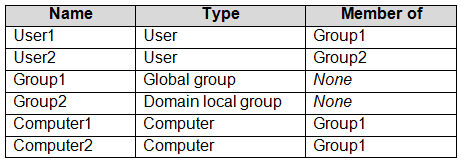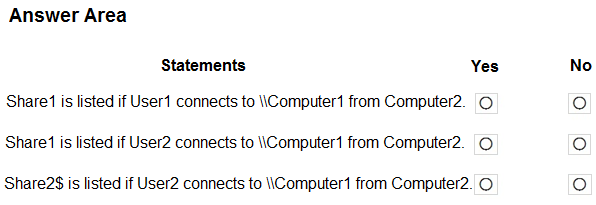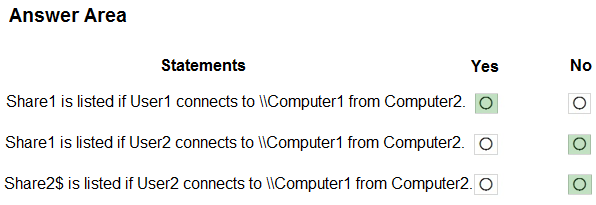

HOTSPOT -
Your network contains an Active Directory domain that contains the objects shown in the following table.
Computer1 contains the shared folders shown in the following table.
The computers have the network configurations shown in the following table.
For each of the following statements, select Yes if the statement is true. Otherwise, select No.
NOTE: Each correct selection is worth one point.
Hot Area:

Yawnnnnnnnnn
Highly Voted 4 years, 3 months agoThomasDehottay
3 years, 10 months agoAnthros
4 years, 3 months agoCaloyB_IT
3 years, 6 months agoAnoniMouse
Highly Voted 4 years agohopalong
3 years, 9 months agoneobahamutk
3 years, 4 months agosyougun200x
2 years, 9 months agoChrisC21
Most Recent 2 years, 3 months agoHenry78
2 years, 8 months agoWojer
2 years, 9 months agochrys
2 years, 11 months agojcgm1990
2 years, 11 months agoceskil
3 years, 2 months agoFrancisLai
3 years, 2 months agoJohnO1971
3 years, 4 months agoGoofer
3 years, 7 months agoluciaalvesnog
3 years, 9 months agoPerycles
4 years, 1 month agoCisco
4 years, 1 month agoAVP_Riga
4 years, 2 months agoredadz
4 years, 5 months agoredadz
4 years, 5 months agoPtit_filou
4 years, 4 months agoRstilekar
4 years, 3 months agoDuyons
4 years, 6 months ago